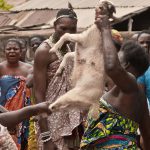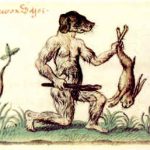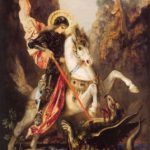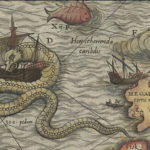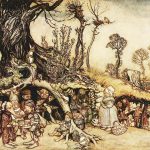When the European colonization of the Americas occurred, the pioneers brought their own werewolf folklore with them and were later influenced by the lore of their neighbouring colonies and those of the Natives. Woodward even believes that the Vikings brought with them their beliefs in werewolves during the Norse colonization of the Americas.
Many Native cultures feature skin-walkers or a similar concept, wherein a shaman or warrior may, according to cultural tradition, take on an animal form. Animal forms vary accordingly with cultures and local species (including bears and wolves), for example, a coyote is more likely to be found as a skinwalker’s alternate form in the Great Plains region. Skinwalkers tend to be totemic.
In modern folklore and fiction the Wendigo found in the stories of many Algonquian peoples is sometimes considered to be similar to lycanthropes, in that humans could transform into a non-human form. The original legends varied significantly, however, with Wendigo sometimes being described as giants made of ice, or hairy beasts, or having other forms.
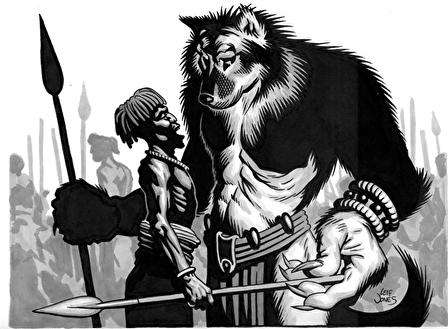
The Cajuns of Louisiana also believed in a similar creature with the variant name of Rougarou.
Belief in the loup-garou present in Canada, the Upper and Lower Peninsulas of Michigan and upstate New York, originates from French folklore influenced by Native American stories on the Wendigo.
In Mexico, there is a belief in a creature called the nahual, which traditionally limits itself to stealing cheese and raping women rather than murder. The Naskapis believed that the caribou afterlife is guarded by giant wolves which kill careless hunters venturing too near. The Navajo people feared witches in wolf’s clothing called Mai-cob.
Skinwalkers and wendigos are described in specific articles in the Mythos section.


